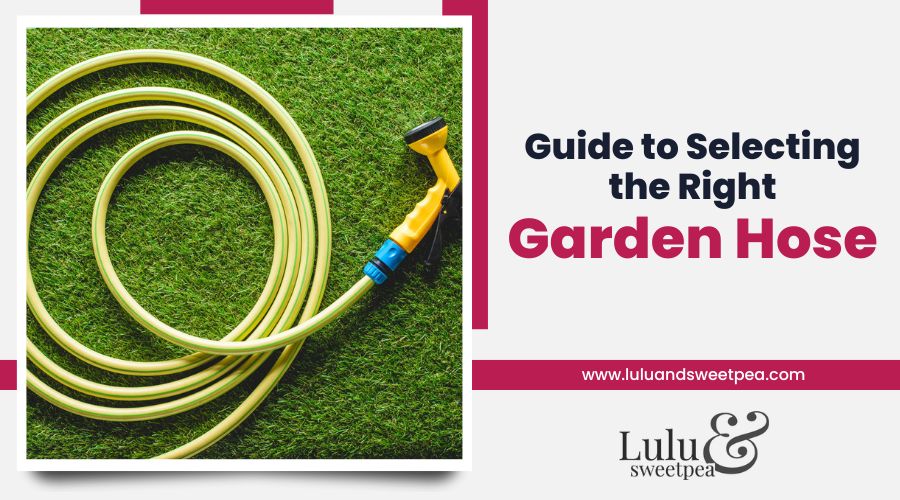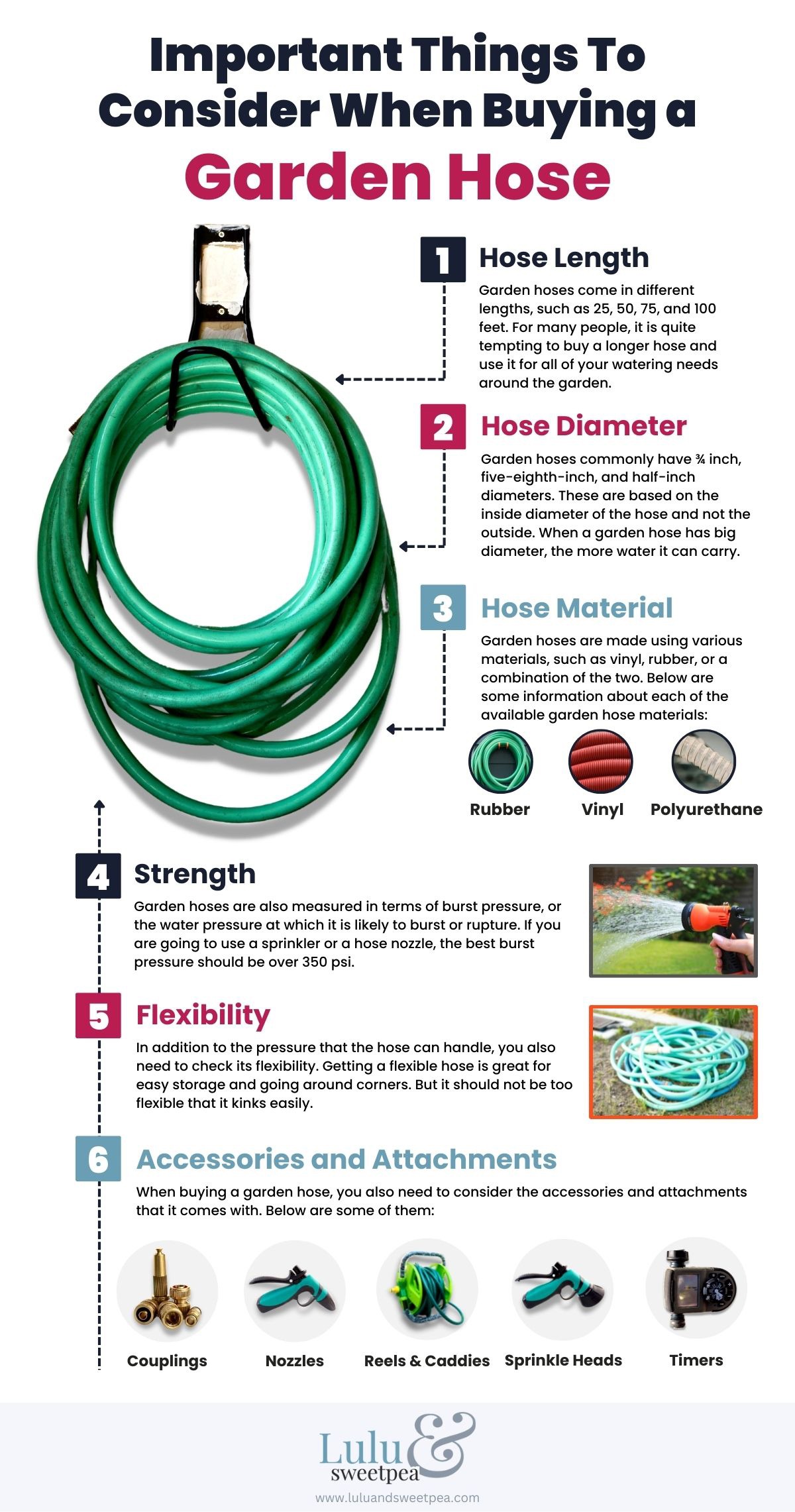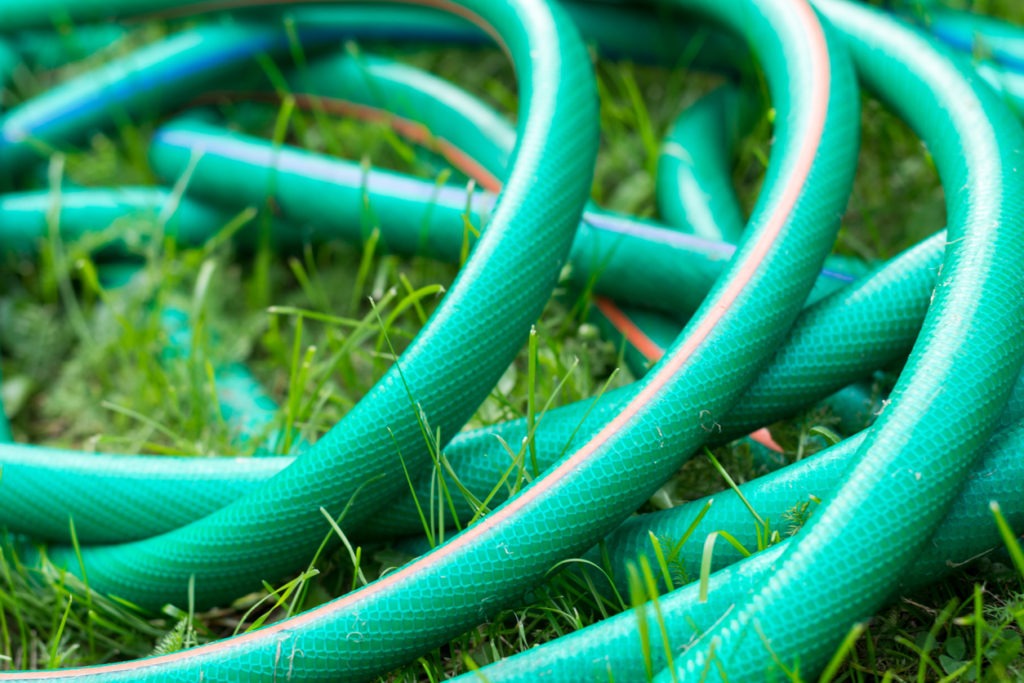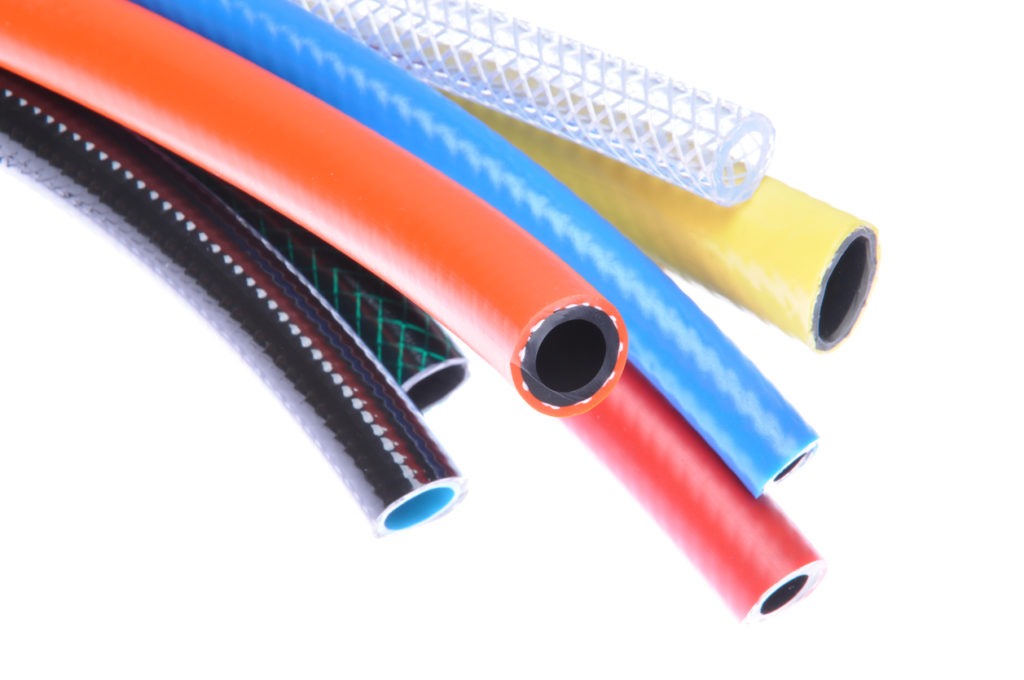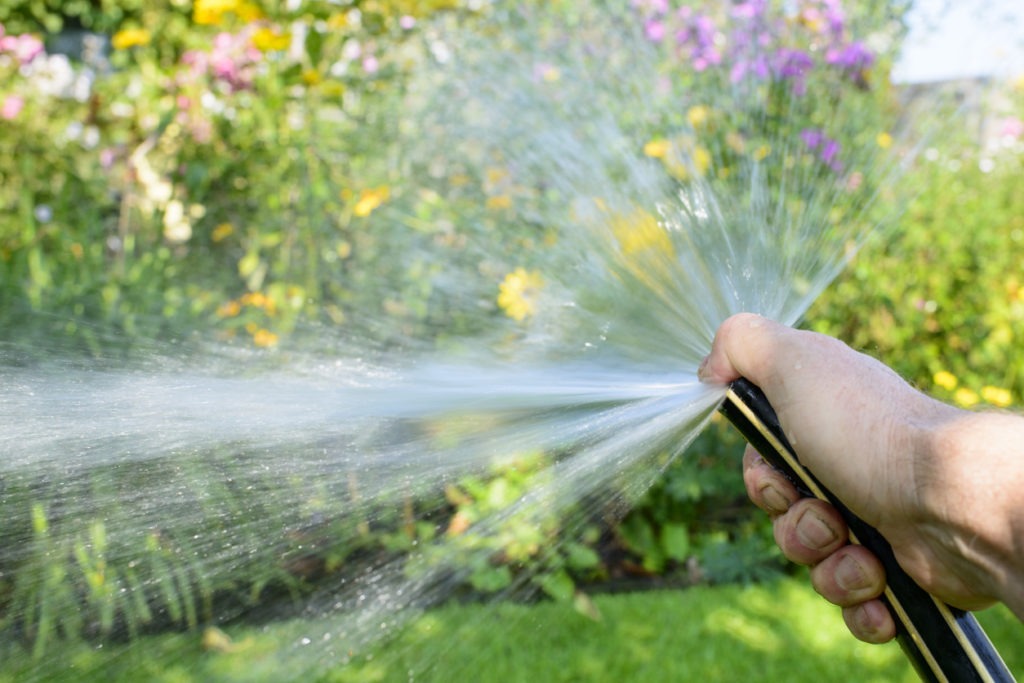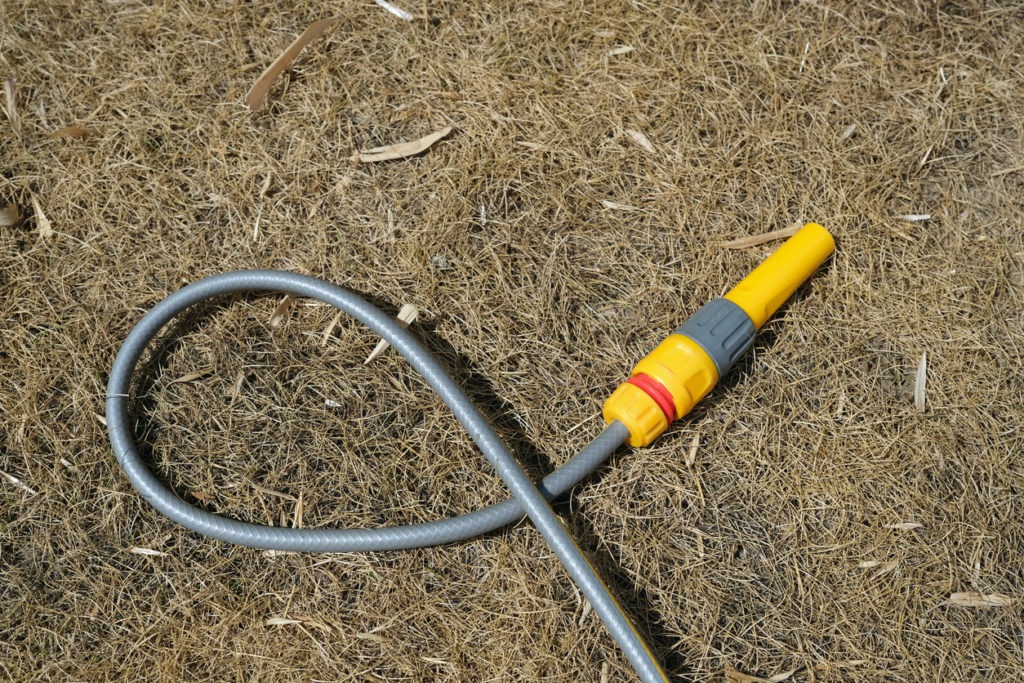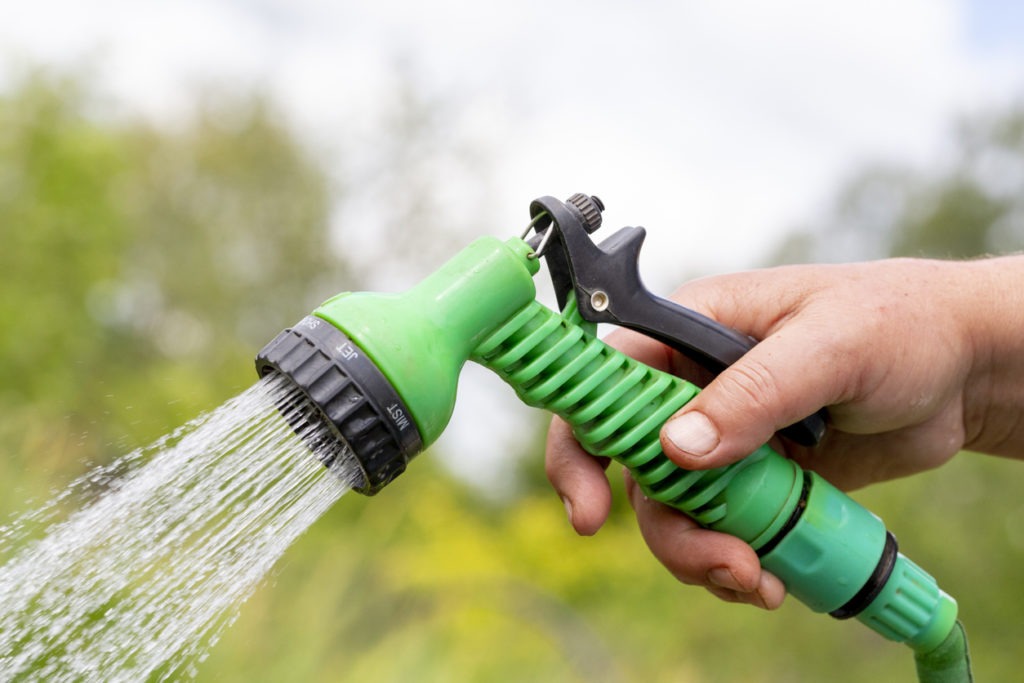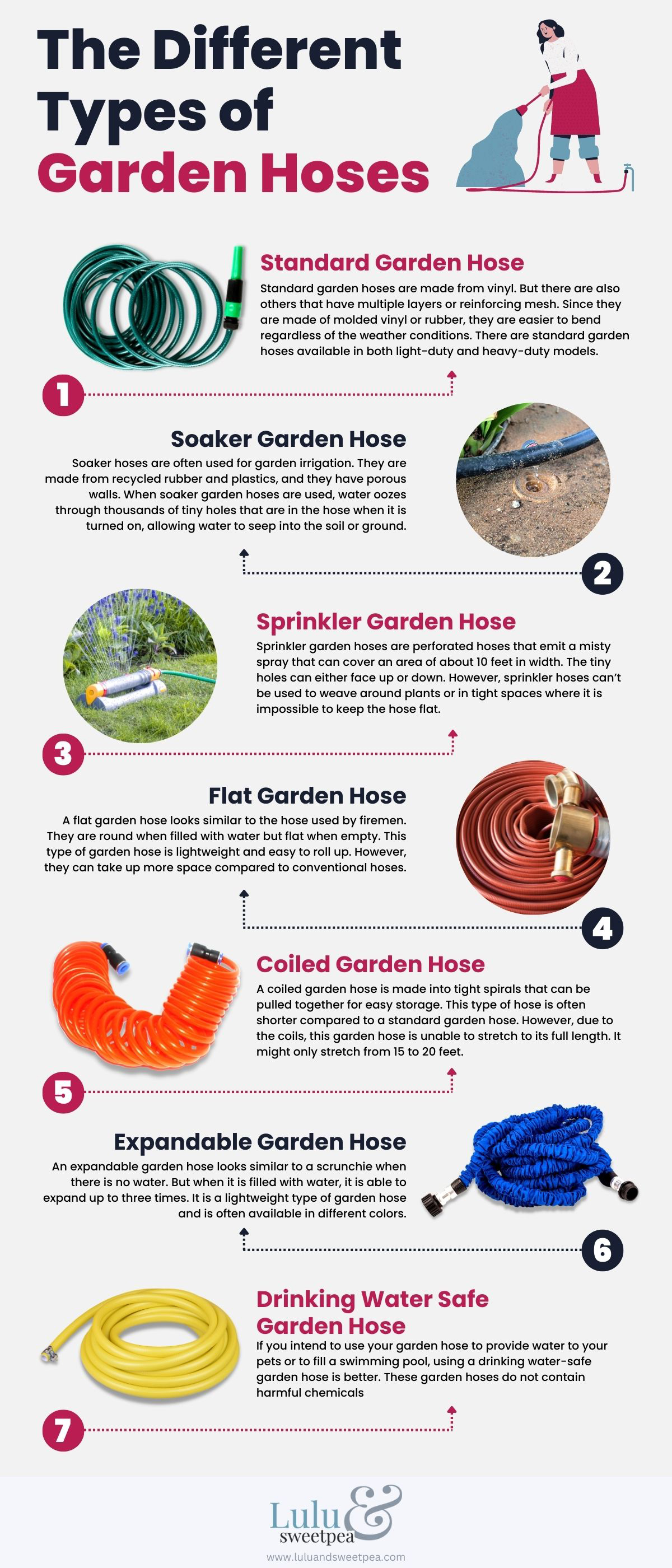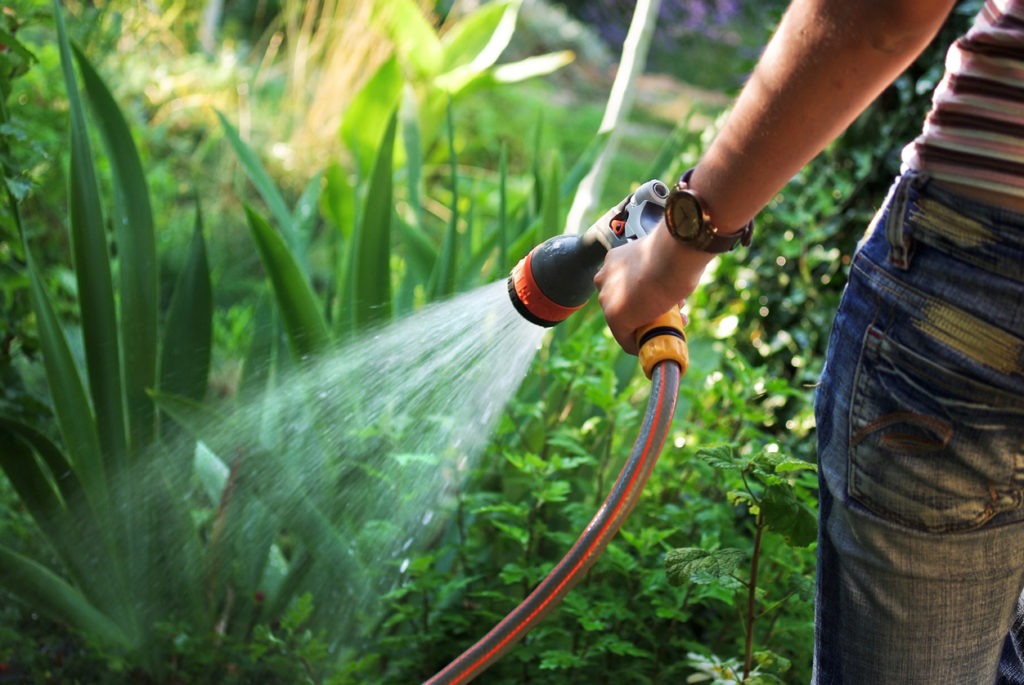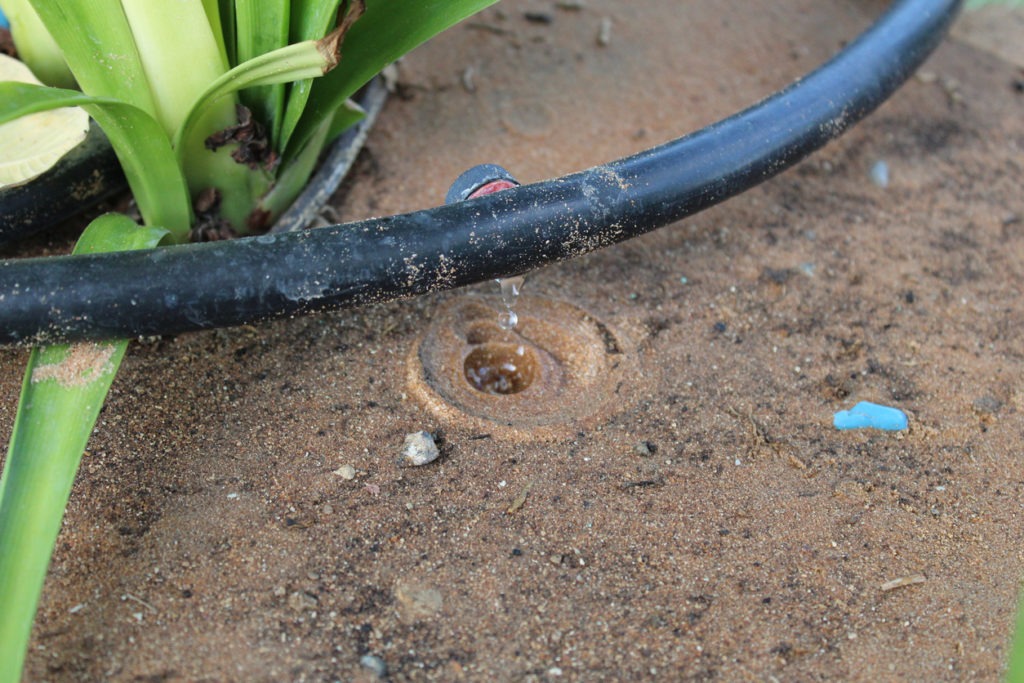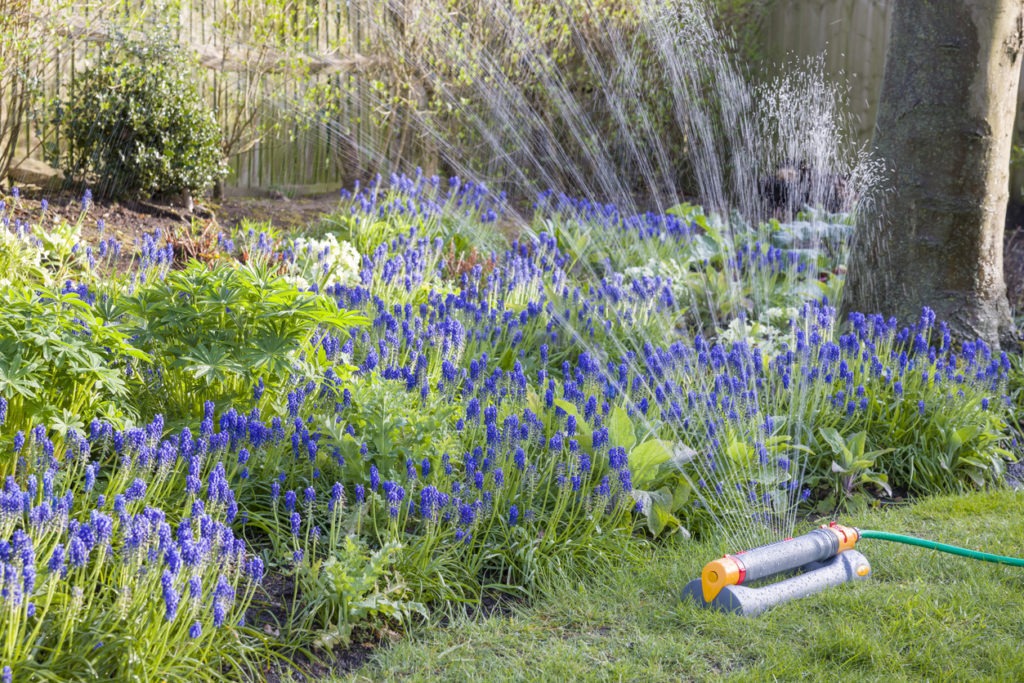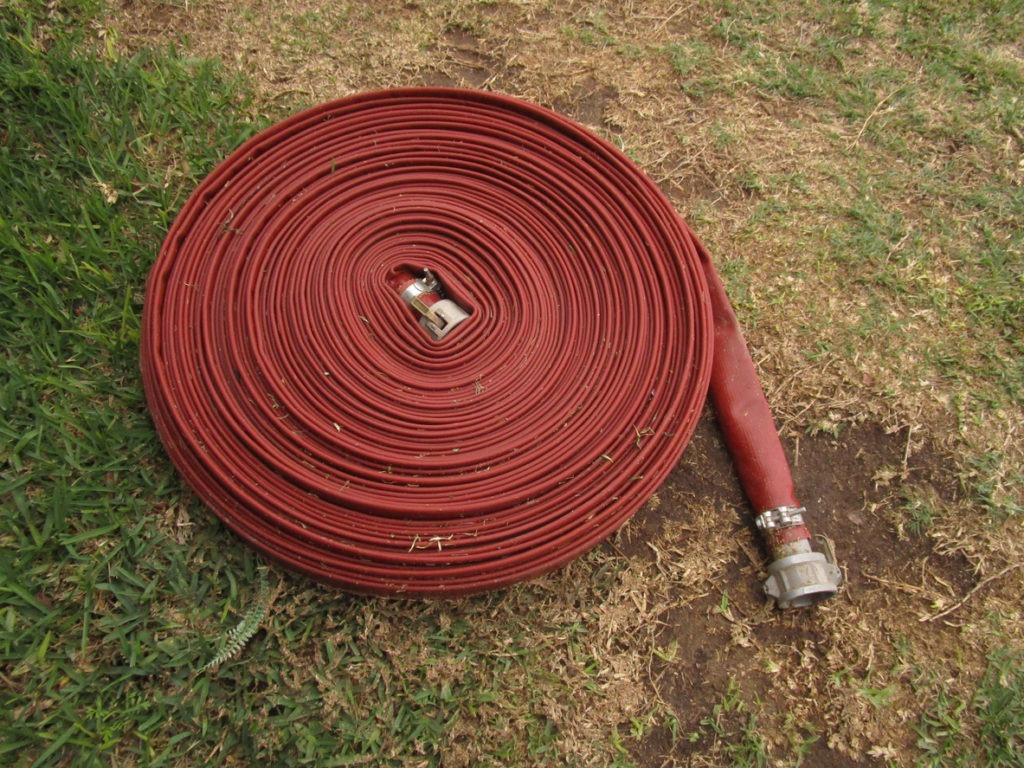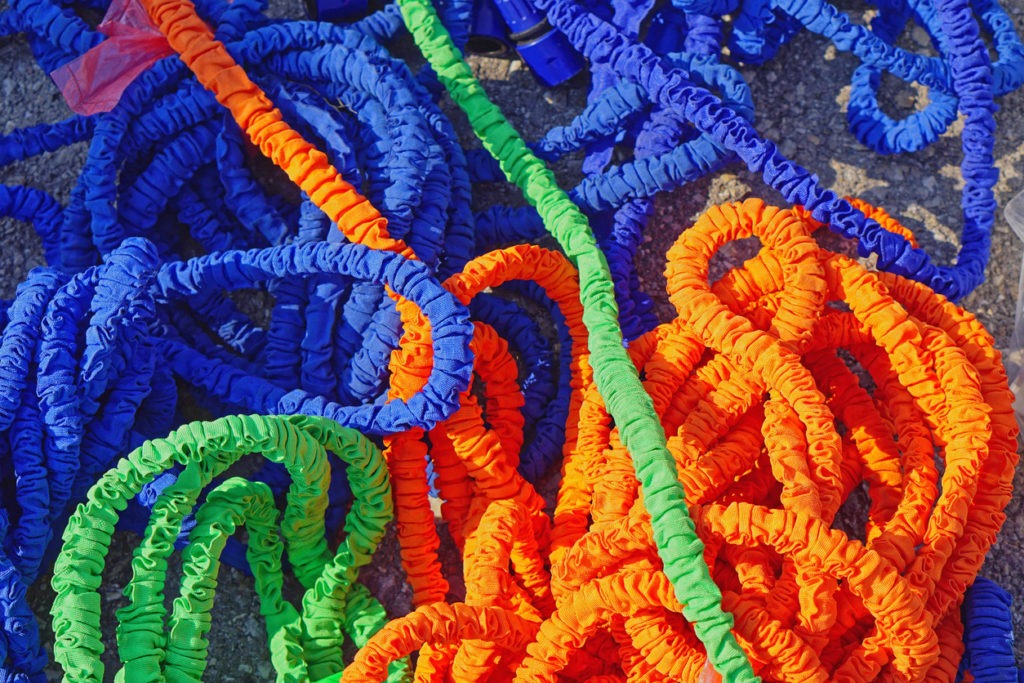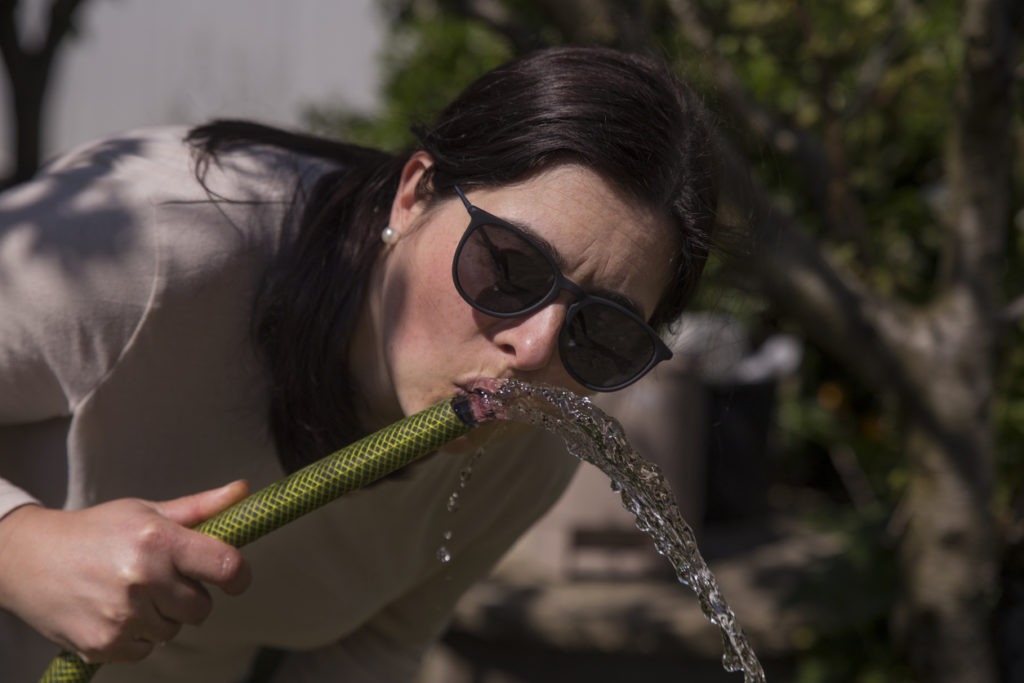When it comes to gardening, watering plants is one of the most important parts of keeping them alive and blooming. There are various ways to water the plants, and one of the most popularly done at home is by using a garden hose. In addition to watering the plants in your garden, a garden hose is also sometimes used by some people to wash their cars. Since it is one of the most useful pieces of equipment in homes with gardens, getting a good quality garden hose is essential.
According to experts, a good garden hose should last around five to ten years. However, a lot of homeowners who purchase lower-quality hoses end up replacing theirs because of leaks, cracks, or rot. Even though some problems can be repaired, it is sometimes wiser to just buy a new one that has better quality.
If you don’t have a garden hose yet or thinking of replacing your old one with a new and better hose but don’t have any idea what to buy, we are here to help you. In this post, we are giving you a guide to selecting the right garden hose.
Important Things To Consider When Buying a Garden Hose
When it comes to garden hoses, there is not just one kind that is perfect for everyone. It’s because what works for you depends on the size of the area where you will be using it, what you will be using it for, and where you plan to store it. In addition to that, there are also other important things that you need to consider when buying a garden hose so you’ll be able to choose the best one that will cater to your needs. Below are some of them:
Hose Length
Garden hoses come in different lengths, such as 25, 50, 75, and 100 feet. For many people, it is quite tempting to buy a longer hose and use it for all of your watering needs around the garden. However, keep in mind that the longer the hose is, the heavier it will be and the more challenging it will be to move around. In addition to that, you will need more storage space. Longer hoses are also more difficult to drain before putting them away, which results in lower water pressure coming out at the end.[1]
In order to get the right length for a garden hose, measure the farthest distance from your spigot and choose a garden hose that goes just beyond that. You also don’t want to tug on the hose to stretch it out because that will cause leaks and snags. For the deck or balcony, choosing a 25-foot garden hose is enough, as most urban yards only require a 50-foot hose at most. Also, if you need a longer garden hose, it is better to consider buying two hoses and just joining them together. That way, you don’t have to lug around a long and heavy garden hose.[1]
Hose Diameter
Garden hoses commonly have ¾ inch, five-eighth-inch, and half-inch diameters. These are based on the inside diameter of the hose and not the outside. When a garden hose has big diameter, the more water it can carry. Generally, a hose that has a five-eighth-inch diameter is the most useful. It has a combination of water flow and pressure, and it is also not too heavy.
If you do not like heavy garden hoses, choosing one with a diameter of half-inch is a good idea. They are lighter, but they do not carry as much water as the bigger ones. They are also best kept to 50 feet or less and should only be used for light-duty gardening tasks, like watering containers and hanging baskets. They are not appropriate to be used with sprinklers or anything that needs higher water pressure like washing the car.[1]
Hose Material
Garden hoses are made using various materials, such as vinyl, rubber, or a combination of the two. Below are some information about each of the available garden hose materials:
Rubber:
This is probably the strongest and most long-lasting material for garden hoses. However, it also costs higher and can be heavy to move around the garden. Rubber garden hoses have the added benefits of resisting cracking and ozone deterioration. In addition to that, they are less likely to kink and are able to carry hot water. It is a great material for heavy-duty use as it lasts through many seasons.[1]
Vinyl:
These garden hoses are usually reinforced with a mesh lining between layers of vinyl or rubber. They are more resistant to kinking and splitting and are able to handle high levels of water pressure.[1]
Polyurethane:
This garden hose material is lightweight and does not kink much. However, it is a bit stiff and fussy to the coil and not that bendable when pulling through the garden.[3]
However, you need to be careful with both rubber and vinyl garden hoses because they can leach chemicals into the water, making them unsafe to drink.
Strength
Garden hoses are also measured in terms of burst pressure, or the water pressure at which it is likely to burst or rupture. If you are going to use a sprinkler or a hose nozzle, the best burst pressure should be over 350 psi. But for pressure washer use, you have to check your manual first as it is possible that you will need a garden hose with even higher psi. Remember that some types of hoses are more prone to rupture compared to others. Therefore, you need to ensure that you buy one with the right burst pressure rating.[1]
Flexibility
In addition to the pressure that the hose can handle, you also need to check its flexibility. Getting a flexible hose is great for easy storage and going around corners. But it should not be too flexible that it kinks easily. It’s because kinking can lead to splitting, which can shorten the life of your garden hose. While all garden hoses will kink if twisted, there are some which are better than others. Some examples are rubber and reinforced hoses. Therefore, when buying a garden hose, try to bend it into a U. If it kinks, try to pick another one.[1]
Accessories and Attachments
When buying a garden hose, you also need to consider the accessories and attachments that it comes with. Below are some of them:
Couplings:
These are also referred to as fittings. They are what attach the hose to the spigot or outdoor faucet and other attachments. They can be made of plastic, brass, or aluminum. The most expensive are brass couplings, but they are also the best when it comes to longevity and performance. Plastic, on the other hand, is the cheapest and the least durable choice.[2]
Nozzles:
Garden hose nozzles are what give you the pistol-like jet of water for cleaning and be adjusted to a wide gentle spray for watering delicate plants. Nozzles can be made of metal or plastic, or a combination of both. Metal nozzles can be heavier, but they also last longer and are less prone to breaking when dropped on a hard surface.[2]
Reels and Caddies:
Hose reels are mostly attached to the wall of a structure, and it gives space for winding up and storing a hose. But there are also freestanding ones available. A hose caddy, on the other hand, serves the same purpose, but it is more portable and has a crank for easy hose wind-up.[2]
Sprinkle Heads:
These attach to a garden hose and can water a large area of grass or garden. It often has an oscillating spray.[2]
Timers:
For sprinkler hoses and soaker hoses, hose timers can be used to be able to water the garden for a set period of time. These are useful if you are not at home often or when you are going on a vacation to make sure that your plants at home are still watered regularly.[2]
The Different Types of Garden Hoses
To be able to choose a good quality garden hose that will match your needs, learning about the different types is essential. As we’ve mentioned earlier, not every garden hose is made equal, and there are several factors that differentiate them. If you are in the market to buy a new garden hose, below are the different types that can help you in choosing the right one for your needs:
Standard Garden Hose
Standard garden hoses are made from vinyl. But there are also others that have multiple layers or reinforcing mesh. Since they are made of molded vinyl or rubber, they are easier to bend regardless of the weather conditions. There are standard garden hoses available in both light-duty and heavy-duty models.
This type of garden hose is used to transport water for basic home lawn care. It is best for watering plants and flowers as well as vegetable gardens. Heavy-duty ones can be used in farms, work sites, and in cleaning high-traffic areas as they support loads of weight.[4]
Below are a few examples of standard garden hoses to help you choose:
- ORGRIMMAR Outdoor Garden Hose: This is a PVC garden hose that is flexible and durable. It is fitted with crush-proof brass couplers, making it leak-proof. This hose also will not kink under pressure, and it always lays flat. It is great for general lawn and garden use.
- Flexzilla Garden Lead-In Hose: This is a great garden hose for all weather. It is abrasion-resistant and crush-resistant. It will not kink under pressure, and it also coils easily and lays flat with zero memory. Compared to other garden hoses, this one is lighter and easier to carry. It also has an O-ring for long-lasting leak-free connections.
- Solution4Patio Homes Garden Hose: This garden hose is heavy-duty and extremely durable. It uses brass couplings and has a burst strength of 450 psi. It features a 5-layer tube reinforced with X-shape threads for heavy-duty jobs around the house and garden.
Soaker Garden Hose
Soaker hoses are often used for garden irrigation. They are made from recycled rubber and plastics, and they have porous walls. When soaker garden hoses are used, water oozes through thousands of tiny holes that are in the hose when it is turned on, allowing water to seep into the soil or ground. This type of garden hose may be laid on the ground directly, preferably under a mulch layer, or buried just below the surface. It is often done in large vegetable gardens.
There are various sizes and lengths of soaker garden hoses. However, they are not flexible, and larger ones can prove difficult to manage. To be able to hold them in place, garden stakes are usually used. Soaker hoses work well on flat areas. They are also shorter in length. To make sure that water seeps along the length of the soaker hose, you will need to have good water pressure.[4]
Below are some examples of soaker garden hoses to help you pick:
- Rocky Mountain Goods Soaker Hose: This is a heavy-duty recycled rubber soaker hose. It includes reinforced fittings for easy connection of additional soaker hoses. It is best for gardens and flower beds. Also, compared to traditional sprinkling systems, it can save up to 70% more water.
- Swan Products Element SoakerPro Soaker Hose: This soaker hose releases a range of .5 to 1 gallon of water per foot while transporting water straight to the roots. It uses 70% less water compared to standard sprinklers. It also has a water restrictor that controls the flow of water.
- Holldoor Soaker Hose for Garden Beds: This is a durable soaker hose that uses less water but still keeps plants growing healthy. It has a slow and steady drip to make sure that almost no water is lost to surface runoff or evaporation. It is also great to be used on vegetable beds.
Sprinkler Garden Hose
Sprinkler garden hoses are perforated hoses that emit a misty spray that can cover an area of about 10 feet in width. The tiny holes can either face up or down. However, sprinkler hoses can’t be used to weave around plants or in tight spaces where it is impossible to keep the hose flat. But it is a water-saving option that features a flat bottom and holes at the top that allows you to mist water exactly where you need it.
It is best to use a sprinkler hose to water a part of your yard that is not straight or has been seeded. However, they will not work well in areas that have taller plants or shrubs that prevent the spray from reaching low-growing plants.[4]
Below are some examples of sprinkler garden hoses to help you choose:
- Eden 97063 Multi-Adjustable Sprinkler and Hose: This sprinkler garden hose is easy to install and best for watering lawns, flower beds, raised gardens, and vegetable gardens. It comes with four fully adjustable sprinklers, a 3-way hose connector, two hose connectors, four extensions to increase height, and 50 feet standard hose.
- GrowGreen Sprinkler For Gardens: This sprinkler can provide your garden with maximum even water sprinkling with 80 psi water pressure. It features 360-degree rotation and 32.8 feet spray distance.
Flat Garden Hose
A flat garden hose looks similar to the hose used by firemen. They are round when filled with water but flat when empty. This type of garden hose is lightweight and easy to roll up. However, they can take up more space compared to conventional hoses. There are flat garden hoses that are sold with a reel. They can be flattened out as they are flexible and can easily bend. However, they have a lower burst pressure rating. They may not work well when pulled around corners.
This type of garden hose is great for those with limited space. It can be used straight across a surface with no snags. However, they are not recommended to be used regularly in the garden as they are not as durable as other types of hoses.[4]
Below are some examples of flat garden hoses to help you pick:
- Green Expert Flat Garden Hose: This garden hose is made using polyester, metal, and silk materials. It has a double-layer design and a flexible rubber-PVC inner tube. It is around 50% lighter compared to conventional hoses. It stays flat and is also kink-, twist-, and tangle-free when no water runs in it. It can also be coiled easily and stored effortlessly.
- FITT Force Lite Garden Hose: This is a flat garden hose that is two times lighter and three times more compact than conventional hoses. It is flexible no matter the season, providing long-lasting performance. It uses FITT patented technologies for a complete kink and tangle-free hose.
Coiled Garden Hose
A coiled garden hose is made into tight spirals that can be pulled together for easy storage. This type of hose is often shorter compared to a standard garden hose. However, due to the coils, this garden hose is unable to stretch to its full length. It might only stretch from 15 to 20 feet. Also, coiled hoses can’t be stored on a reel, and they might become tangled when placed in containers or storage bins.
To store a coiled garden hose, you need to have stand-up and wall-mounted hangers. Coiled hoses are best used for hand watering. They are often used in small areas, such as on a patio or balcony. They can also be stored away from the path.[4] Below are some examples of coiled garden hoses to help you pick:
- Automan Coiled Garden Hose: This coiled garden hose is 50ft. in length and comes with corrosion-resistant brass fittings. It is lightweight but strong and durable. It is also highly elastic and can be used for irrigating plants and washing cars and pets.
- Orbit Coil Garden Hose: This is a 25ft. coiled garden hose that quickly deploys for all outdoor watering uses. It also comes with a nozzle that features 8 different patterns for various watering needs, such as shower, jet, flat, cone, center, angle, full, and mist spray modes.
Expandable Garden Hose
An expandable garden hose looks similar to a scrunchie when there is no water. But when it is filled with water, it is able to expand up to three times. It is a lightweight type of garden hose and is often available in different colors. In terms of diameter, expandable garden hoses are around 1/2-inch with enough water flow to match a non-expandable model. However, keep in mind that expandable garden hoses do not have the same water flow as a standard or regular garden hose.
While this type of garden hose expands as promised, it can sometimes become uncooperative when it comes to contracting properly over time. This makes it challenging to store or coil. After the hose has been expanded, it will shrink. But if it is exposed to high water pressure, there is a risk of bursting, especially if it is left in direct sunlight, as its inner tube is flexible and thin.[4]
What most people love about expandable garden hoses is that they are lightweight. They are great for hand-watering plants and flowers in the garden. Below are some examples of expandable garden hoses to help you choose:
- Mueller Armor Flow Heavy Duty Expandable Garden Hose: This is a lightweight and durable expandable garden hose with a 3-layer flexible latex material. It allows the hose to be self-draining, non-kinking, non-tangling, and non-twisting. It automatically expands and self-drains. It can expand from 16 feet to 50 feet while in use. It comes with a nozzle, nozzle hose storage hook, three spare rubber gaskets, and an easy-fit carrying bag.
- Joeys Garden Expandable Garden Hose: This garden hose is expandable up to three times its size. It uses solid brass connectors to ensure that the hose can screw well to any standard spigot. It also comes with an 8-pattern hose spray nozzle.
- The Fit Life Flexible and Expandable Garden Hose: This expandable garden hose is lightweight, functional, and collapsible. It is 9 feet long when not in use and expands up to 25 feet under water pressure. It also never kinks, twists, or tangles. It also comes with a spray nozzle for different watering purposes.
Drinking Water Safe Garden Hose
If you intend to use your garden hose to provide water to your pets or to fill a swimming pool, using a drinking water-safe garden hose is better. These garden hoses do not contain harmful chemicals. When a garden hose is marked as drinking water safe or lead-free, they are safe to be used. Most of the time, they are sold for recreational purposes, such as for RVs and boats. Drinking water-safe garden hoses have non-toxic inner cores that are approved by the FDA, and they do not release harmful chemicals.[4]
Below are some examples of drinking water-safe garden hoses to help you choose:
- Camco Premium Drinking Water Hose: This hose is safe for drinking water as it is made of BPA-free and phthalate-free PVC. It will not give the water a garden hose taste. It is also reinforced for maximum kink resistance and it is UV stabilized for lasting performance.
- Automavenn Premium Drinking Water Hose: This hose is made of high-quality eco-friendly rubber, which can provide clean, safe, and good-tasting water. There is no plastic or rubber odor that will mix with the water when this hose is used, even when it is left outdoors under the sun. It is made of 3 layers of premium hybrid polymer material, making it lightweight but durable and flexible.
Conclusion
While garden hoses are a simple piece of outdoor equipment for homes, it is essential to choose carefully when buying one. You need to choose a type of garden hose that will be suitable for your needs. That’s why we have explored the options in depth in this post. There is no single best option among the types that we’ve discussed here as each of them has its advantages and disadvantages. Therefore, determining your needs and the features that will work best for your garden will help you in making the right choice. We hope that this post was able to help you learn more about selecting the right garden hose for you to make a wise choice.
References
[1] Hemingway, M. (2021, May 10). Best Garden Hoses: Guide & Recommendations. Gardening Products Review. Retrieved October 13, 2022, from https://gardeningproductsreview.com/best-garden-hose/
[2] Heath, E. (2021, July 8). Garden hoses: What to know before you buy. Family Handyman. Retrieved October 13, 2022, from https://www.familyhandyman.com/article/garden-hose-guide/#how-to-choose-the-right-garden-hose
[3] Howell, J. (2020, April 30). Different types of garden hoses. Garden Gate. Retrieved October 13, 2022, from https://www.gardengatemagazine.com/articles/how-to/water-feed/different-types-of-garden-hoses/
[4] Ashwak. (2022, September 24). Types of garden hoses – everything you need to know. Electronics Hub. Retrieved October 13, 2022, from https://www.electronicshub.org/garden-hose-types/
